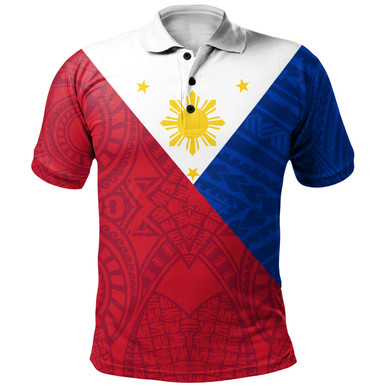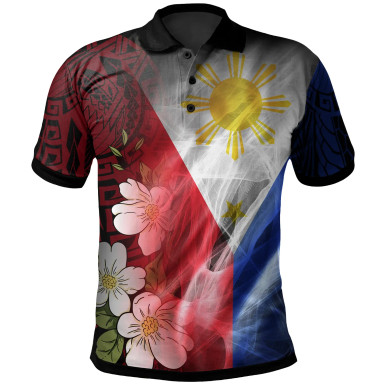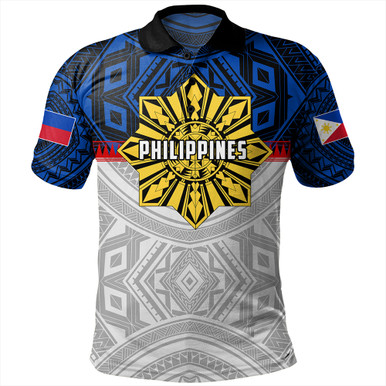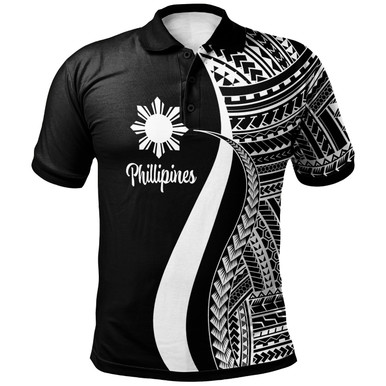The humble polo shirt, a timeless classic in wardrobes worldwide, takes on a unique vibrancy when infused with the rich tapestry of Filipino culture. More than just a piece of clothing, a polo shirt designed with a true understanding of the Philippines becomes a wearable story, a canvas reflecting the archipelago's diverse heritage, breathtaking landscapes, and indomitable spirit. If you're looking to create or procure polo shirts that genuinely resonate with a Filipino background, you're embarking on a journey into a world of color, symbolism, and heartfelt expression. This article will guide you through the essential elements that define the 'Filipino background' in polo shirt design, ensuring your creations are not just stylish, but also deeply meaningful.
Why Polo Shirts Are a Staple in the Philippines
Before diving into design specifics, it's crucial to understand the polo shirt's popularity in the Philippines. Its widespread adoption isn't accidental; it's a perfect storm of practicality and style:
- Tropical Climate: The Philippines' hot and humid weather makes breathable fabrics a necessity. Polo shirts, often made from pique cotton, offer comfort and allow for better air circulation than many other collared options.
- Versatility: They strike an ideal balance between casual and formal. A polo shirt can be worn for a casual day out, a semi-formal office setting, or even a relaxed evening event. This versatility makes it a go-to choice for many Filipinos across various demographics.
- Smart Casual Appeal: The collared design lends an air of neatness and professionalism, making it suitable for schools, corporate uniforms, and official events, while still maintaining a comfortable, approachable feel.
- Uniform Culture: Polo shirts are widely adopted as uniforms for schools, companies, government agencies, and even sports teams, creating a demand for designs that reflect institutional identity while often incorporating national or local elements.
The Heart of Filipino Design: Cultural Influences
To truly capture the Filipino background in your polo shirt design, you must delve into the country's profound cultural influences. These elements are not just decorative; they carry centuries of history, belief, and identity.
Indigenous Art and Patterns
The Philippines is home to over a hundred indigenous groups, each with its unique artistic traditions. Incorporating these patterns can add incredible depth and authenticity to your designs.
- Textile Weaves: Look to the intricate geometric patterns of the Ifugao's "ikat," the vibrant "t'nalak" dreamweaves of the T'boli, the bold designs of the Yakan, or the elaborate "malong" patterns of the Maranao. These aren't just pretty shapes; they often tell stories of nature, spirituality, and community.
- Baybayin Script: The ancient pre-colonial Filipino writing system, Baybayin, offers a beautiful and unique way to incorporate text or subtle symbols. A single character or a short phrase can add a touch of historical elegance and national pride.
- Symbolism: Many indigenous patterns feature symbols representing animals (e.g., sarimanok, an iconic mythical bird from Maranao folklore), plants, celestial bodies, or human figures, each carrying specific meanings related to prosperity, protection, or identity.
National Symbols and Patriotism
Filipinos are known for their strong sense of national pride. Integrating national symbols is a straightforward yet powerful way to express this.
- The Philippine Flag: The sun with its eight rays (representing the first eight provinces that revolted against Spain) and three stars (Luzon, Visayas, Mindanao) is an instantly recognizable and potent symbol. While a direct flag print might be too literal for some, abstract interpretations of its colors (blue, red, yellow, white) or its sun and stars motif can be highly effective.
- National Flora and Fauna: The Sampaguita (national flower) offers a delicate, fragrant motif, while the majestic Philippine Eagle or the sturdy Carabao (water buffalo) can represent strength and resilience.
- Historical Figures and Events: Subtle references to national heroes like Jose Rizal or significant historical moments can evoke a sense of shared history and struggle for freedom.
Vibrant Festivals and Traditions
The Philippines is a land of fiestas! These colorful celebrations offer a wealth of inspiration for dynamic and joyful designs.
- Color Palettes: Festivals like Sinulog (Cebu), Ati-Atihan (Aklan), and Kadayawan (Davao) burst with bright, contrasting colors. Think fuchsia, turquoise, emerald green, and gold – colors that convey energy and celebration.
- Motifs: Masks, traditional costumes, musical instruments, and dance movements from these festivals can be stylized into unique graphic elements.
Everyday Life and Modern Filipino Identity
Beyond ancient traditions, contemporary Filipino life also offers rich design inspiration.
- Iconic Transportation: The "King of the Road," the Jeepney, with its vibrant colors and unique design, is a beloved symbol of Filipino ingenuity and street culture. Stylized jeepney prints or patterns can be playful and distinctly Filipino.
- Local Flavors: While perhaps less common for polo shirts, abstract representations of beloved Filipino food (e.g., mangoes, adobo ingredients) can add a quirky, relatable touch.
- Urban Art and Pop Culture: The burgeoning street art scene in cities like Manila, along with local slang and contemporary music (OPM), can inspire modern, edgy designs that appeal to a younger demographic.
Practical Considerations for Design in the Philippines
Beyond the aesthetics, practical aspects must also be considered when designing polo shirts for the Filipino market:
- Fabric Choice: Given the climate, prioritize breathable fabrics like pique cotton, CVC (Chief Value Cotton), or even moisture-wicking blends for activewear. Comfort is paramount.
- Color Fastness: Bright colors are popular, so ensuring good color fastness is important to withstand frequent washing in a tropical environment.
- Sizing: Be mindful of local sizing preferences, which might differ slightly from international standards.
- Customization Trends: Many polo shirts in the Philippines are customized. This could be for corporate branding, school uniforms, family reunions, or personal expression. Designs should ideally lend themselves well to embroidery, screen printing, or sublimation.
Bringing It All Together: Your Design Journey
When designing a polo shirt with a Filipino background, the key is to be thoughtful and respectful. Don't just copy and paste; understand the meaning behind the symbols and patterns you choose. Collaborate with local artists, designers, or cultural experts if possible. This not only ensures authenticity but also supports the local creative community.
Whether you're aiming for a design that is overtly patriotic, subtly traditional, or vibrantly contemporary, understanding the depth of Filipino culture will elevate your polo shirts from mere garments to pieces of wearable art that truly tell a story. From the ancient scripts of Baybayin to the bustling energy of a Manila street, the Philippines offers an endless wellspring of inspiration, waiting to be woven into your next design.
In summary, designing polo shirts with a Filipino background involves appreciating the country's tropical climate and the shirt's versatility, then deeply integrating cultural elements. This includes drawing inspiration from diverse indigenous patterns and symbols like Baybayin, embracing national emblems such as the flag's sun and stars, capturing the festive spirit of local celebrations, and even reflecting modern Filipino daily life through icons like the Jeepney. Practical considerations like fabric choice and customization options are also crucial to ensure the designs are not only beautiful but also suitable for the local context. By thoughtfully incorporating these elements, designers can create polo shirts that are not just fashionable, but also meaningful representations of the Philippines' rich identity.




